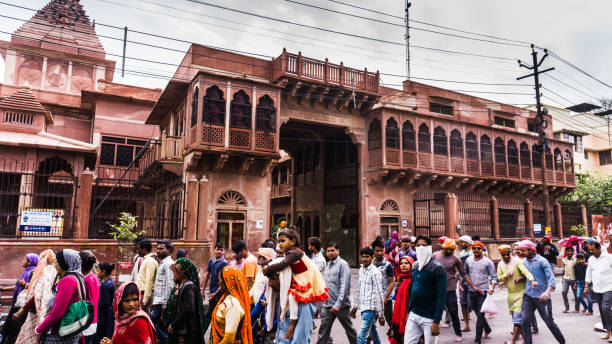The Annapurna Circuit is one of the maximum lovely and tough treks on the earth, however that also way it is a toll that should be prepared for both physically and mentally, and one for which constant self-care is critical. The maximum vital issue is safety/ suitable health for absolutely everyone who is going to start this adventure in the Himalayas due to the fact the weather is unpredictable, roads are high, and trains are infrequent.
Whether you are alone or with a group of people, you need to be able to guarantee your life on the trail; the trail favors no one in particular, and a slight problem can quickly turn into a death situation for yourself and your group. Here’s how: In this guide, you’ll learn the best way to get started, what you should look for, and what you should eat to build and maintain good habits from the first day until you’ve completed the circuit.
Annapurna Circuit: protection and health risks.
You should recognize about how much your Annapurna Circuit and Tilicho Lake Trek into the Himalayas: Altitude contamination, dehydration, climate adjustments, and fatigue. And that a portion of the trail is remote helps to reduce access to available emergency treatment. You can avoid them by being prepared.
Although most trekkers make it to the top without a serious incident, even relatively minor symptoms, such as fatigue and stomach distress, can kill the adventure if they’re not managed and treated when they’re still small. Build your health from the start, and you will be strong throughout.
Pre-Trek Fitness and Pre-Spinning in Nepal
Trail health begins even before you step onto the plane. Start with a thorough physical examination and high-altitude travel consult with your doctor.” Depending on where you are coming from and your medical history, some other shots may be necessary (i.e., typhoid, hepatitis A, tetanus, etc.).
Annapurna Circuit Nepal Train — most while walking and hiking long distances, with a heavy, loaded backpack. Getting in better shape, particularly for the hills, will relieve the burden on your body for this, and adaptability will come more easily. Carry along your simple first-aid supplies and personal medications — the pharmacy choices on the trail are thin.
How to acclimatize and be safe on high-altitude treks
Like any treks that reach better elevations, via some distance, the greatest hazard in climbing the Annapurna Circuit is the threat of altitude sickness, which begins to affect you at 2,500m or higher t 200 feet), and may be a severe concern above 3,000m (800 toes). It’s known as acclimatisation, and it facilitates your body’s alter to the thinner air the higher you go.
The quickest way is to really begin to understand pacing while walking. Most trekkers spend two nights in towns like Manang, taking an acclimatization hike before going higher. Beyond that, said Tompkins, “Most people do fine with normal routines above 3,000 meters.” And if you are ascending to over 3,000 meters — like on Kilimanjaro — stick to the principle of “Climb high, sleep low,” and don’t gain more than 500 meters in sleeping elevation per day.
Water stops and safe hydration during the round
It is particularly important at high elevations to keep yourself proverbially well-oiled, but sipping untreated water from a river, or straight from taps, can swiftly give you a very bad stomach. If any water is drunk, or if any is available for brushing teeth, look for purification tablets, a water filter, or a UV preparation device.
Bottled water is available in some of the villages, but it is costly and contributes to plastic waste in a fragile place. Bring at least one (the two I most like are big refillable bottles like these by Nalgene or a hydration pack), and you can treat any water from lakes and streams you do find to be on the safe side in case you don’t want a waterborne ailment to slow you down.
Safe Food and How Not to Get a Bellyache When You Travel
Teahouses will serve safe food, food prepared, and often with love, but here are some of the prejudices you can avoid make you sick. Eat only cooked food — soups, dal bhat (rice and lentils), fried rice, pasta, dal bhat — and avoid raw vegetables or milk unless you know it’s been well handled.
Stay away from meat, high among the villages (refrigerators, so long..). Deliver along some snacks or strength meals as well, so that you don’t run low on power if you have a protracted day of exploring. In case you get unwell, rest and hydrate before getting back on the road.
Hygiene and Health in the Backcountry
Whether a marketing ploy or not, washing your hands is your most potent defense against both, well, viruses and the stomach bug. You wash your hands before you eat and after you use the bathroom. Carry hand sanitizer (you’ll find access to soap and water won’t always be available).
Wet wipes can come in handy for basic hygiene when showers aren’t an option. Toenail clippers and blister plasters can help guarantee that minor issues don’t become more than necessary painful distractions. Instead, realize that you’re not going to stay clean in the backcountry and embrace it. Taking a mountain shower is a luxury, but doing something to stay quasi-clean — heating a bowl of water and using a cloth on occasion — will at least help keep your morale up, too.
Momentum on the Trail and Not Getting Beat Up
The relentless back-and-forth of the circuit, the succession of gnarly trails, the miles of simple walking a day — all of it takes its toll on the body. Pretty much everyone has returned with some sort of blisters or aches and pains, whether a twisted ankle in one place, a nagging knee in another, or a pulled muscle from overdoing it or not resting enough.
Walk out with sticks for added relief in the leg joints. Stay loose in the morning or relax after work with a stretch. Wear loose shoes suitable for the roughness of the ground. If you’re in serious pain and agony (and we will assume you are), it is better to throw in the towel than try to save face (or the proverbial mile) and possibly create an injury that may haunt you for the rest of the trail.
Saving COSY From season to season _ SYNONYM
Mountain weather is unpredictable. It is able to be sunny and hot in the morning, which turns into wind, snow, or rain in the aid of afternoon. Deliver flexible layers that you may put on individually or blend, suit, and layer, and bring a rain shell and an insulated jacket for your day.
Octopus Keep the head, hands, and feet warm at high altitude — they’re the three parts of the body where you lose heat (and willpower) fastest. Develop the habit of changing into dry clothes at the end of each day of trekking to keep away chills; never sleep in wet clothes. There are also some more lighthearted areas filled with fun things like games and jokes, but also a tent guide, dream sleeping bag (one for each age group), and Hatty tips for a good night’s sleep!
If you have a health problem, and what to do if you need help
The Annapurna Circuit is off the grid, but rudimentary health posts are established in the larger villages, such as Manang, and local teahouse proprietors know the maladies that plague the region. More serious incidents: Helicopter evacuation is possible, but if you don’t have insurance, be prepared to pay an arm and a leg.
High altitude hiking and clinical evacuation insurance are the best in no way-out-of-sight objects. Take a simple first resource kit with you, including rehydration salts, paracetamol, blister remedy, and altitude illness medication. Encouraged. When you have a question approximately a symptom, choose to stop and ask for help and check in place of just soldiering on.
Final Thoughts to Keep in the Right Mindset and Fit on Your Journey
Mental ability is every bit as important as physical ability to your success as a trekker. Some days are going to be longer than others; you are going to feel tired and in the dumps. Sampling and savoring transport us somewhere on those days.
Live fine, stay curious, don’t forget why you got here inside the first area. Chat with different trekkers, recognize the views — and, in the end, of course, really take lengthy, deep breaths and go with the flow. Annapurna Circuit is a challenge, physical and mental, and you’re strong and loving every single damned stride of it.











